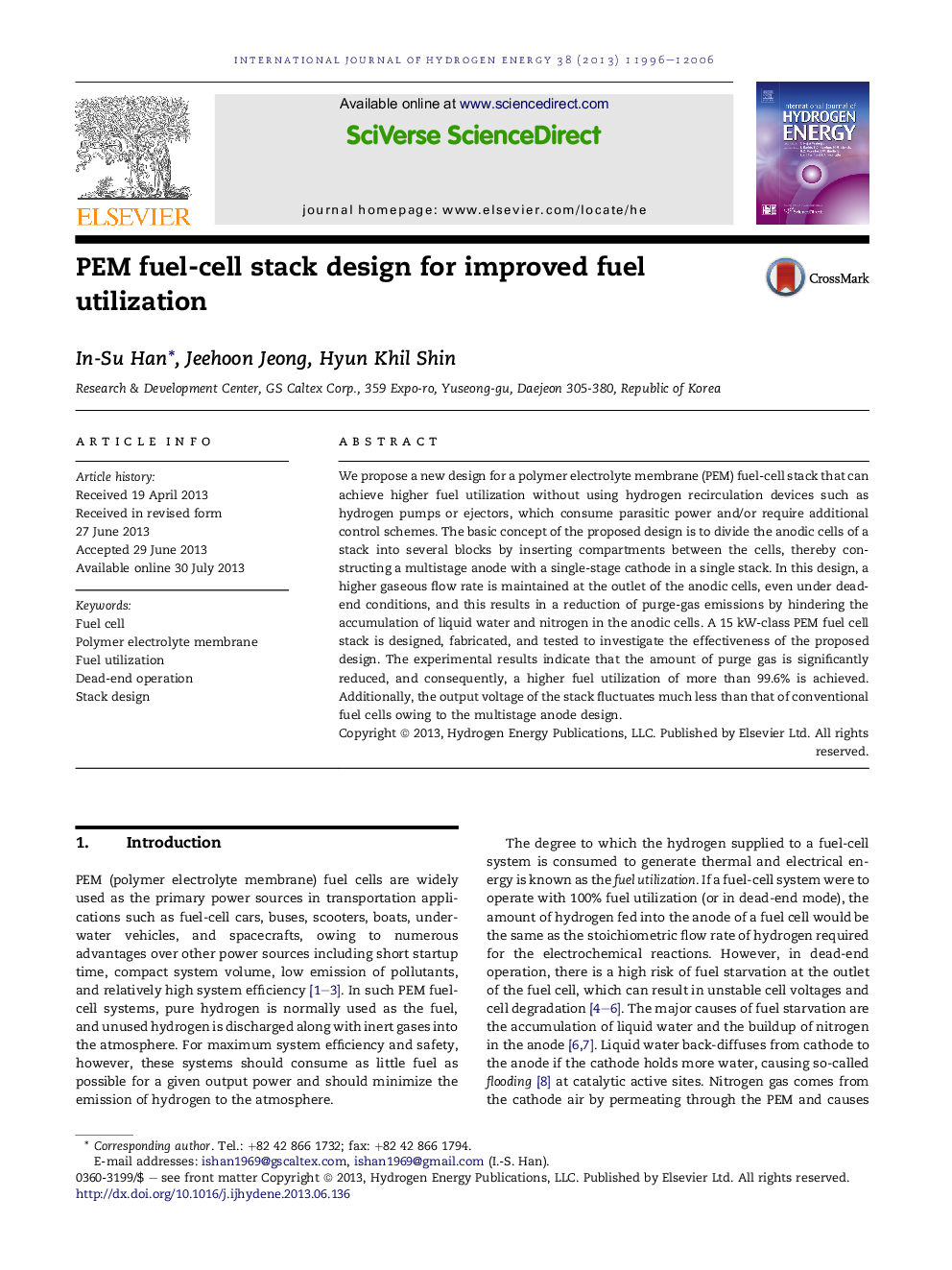| Article ID | Journal | Published Year | Pages | File Type |
|---|---|---|---|---|
| 1274918 | International Journal of Hydrogen Energy | 2013 | 11 Pages |
•A new design for a PEMFC stack is proposed to improve the fuel utilization.•Higher fuel utilization is achievable without hydrogen recirculation.•A 15 kW-class stack was fabricated to test the performance of the new design.•Fuel utilization values of 99.7–99.8% were attained in a 1.5–15 kW operating range.
We propose a new design for a polymer electrolyte membrane (PEM) fuel-cell stack that can achieve higher fuel utilization without using hydrogen recirculation devices such as hydrogen pumps or ejectors, which consume parasitic power and/or require additional control schemes. The basic concept of the proposed design is to divide the anodic cells of a stack into several blocks by inserting compartments between the cells, thereby constructing a multistage anode with a single-stage cathode in a single stack. In this design, a higher gaseous flow rate is maintained at the outlet of the anodic cells, even under dead-end conditions, and this results in a reduction of purge-gas emissions by hindering the accumulation of liquid water and nitrogen in the anodic cells. A 15 kW-class PEM fuel cell stack is designed, fabricated, and tested to investigate the effectiveness of the proposed design. The experimental results indicate that the amount of purge gas is significantly reduced, and consequently, a higher fuel utilization of more than 99.6% is achieved. Additionally, the output voltage of the stack fluctuates much less than that of conventional fuel cells owing to the multistage anode design.
